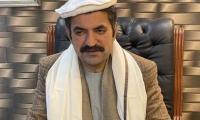ISLAMABAD: Since Pakistan’s entry into the IMF’s first program in 1958, Islamabad has drawn SDR21.789 billion (equivalent to about US$31.1billion) from the Fund out of sanctioned amount of SDR29.673 billion, the top official of the Economic Affairs Division (EAD) informed a parliamentary panel Thursday.
The SDR is an international reserve asset, created by the IMF in 1969 to supplement its member countries’ official reserves. To date, a total of SDR660.7 billion (equivalent to about US$943 billion) have been allocated.
The largest-ever allocation of SDR 456 billion, approved on August 2, 2021, and effective from August 23, 2021, aimed to address global reserve needs and support countries impacted by COVID-19. The SDR’s value is based on a basket of five currencies: the U.S. dollar, euro, Chinese renminbi, Japanese yen, and British pound sterling.
Pakistan has paid the IMF’s SDR2.815 billion in interest since 1984, the official report.
The Senate Standing Committee on Economic Affairs that met here with Senator Saifullah Abro in the chair however sought breakdown of IMF’s loans, including the amounts received and the interest paid over the years.
Pakistan has participated in 24 IMF programs since signing its first agreement in 1958, with the latest being the 2023 Stand-By Arrangement (SBA). The country has also accessed one-time IMF facilities, including those for the 2010 floods and the COVID-19 pandemic.
Current records show Pakistan has drawn SDR 21,789.28 million from the IMF. The outstanding principal amount is SDR6.369 billion.
Dr. Kazim Niaz, Secretary for the Ministry of Economic Affairs, provided an overview of 298 projects funded through multilateral and bilateral sources. Of these, 146 are multilateral and 152 are bilateral.
Multilateral projects include 63 funded by the World Bank, 54 by the Asian Development Bank, six by IFAD, 14 by the Islamic Development Bank, and 21 by the European Union. Bilateral projects include funding from China for 16 projects, Korea 15 projects and Saudi Arabia with 13 projects. Besides, 60 projects by Italy, Germany, France and the UK.
The committee learned that there are 58 World Bank loan-financed projects in Pakistan, with a commitment of $14.806 billion for 58 projects. So far, $6.162 billion has been disbursed.
Notable projects include the Dasu-Islamabad Transmission Line, with a $700 million commitment and $112 million disbursed, and expected to be completed by June 30, 2025. The Tarbela Four Expansion Project has a $390 million commitment, with $159 million released; set to finish by September 30, 2027.
The committee unanimously recommended that the EAD provide details of completed or closed projects from 2002 onward and update progress reports before the next meeting. They also plan to review projects sector-wise to determine completion status and address delays.
Chairman Abro questioned why the Independent Power Producers (IPPs) proposals were not adequately considered, citing the agreements as a source of ongoing issues. Dr. Niaz also noted that Pakistan’s foreign exchange reserves include $4 billion from China and $5 billion from Saudi Arabia.
The meeting was attended by Senators Taj Haider, Kamil Ali Agha, Rana Mahmood ul Hassan, Dr Kazim Niaz, and other senior officials.
Some 3,500 people were killed in immediate aftermath of chemical leak and up to 25,000 are estimated to have died...
President Prabowo Subianto, who was elected in October last, would stay in Pakistan for three days, sources said
After agreement, measures were being taken to reopen routes and ensure peace in area
Marwat emphasizes that very heavy fees were being paid to lawyers about which he had knowledge
Breaching interim order could lead to up to five years in prison, interior ministry said
Biden says authorities were probing "any possible connection with attack in New Orleans"







